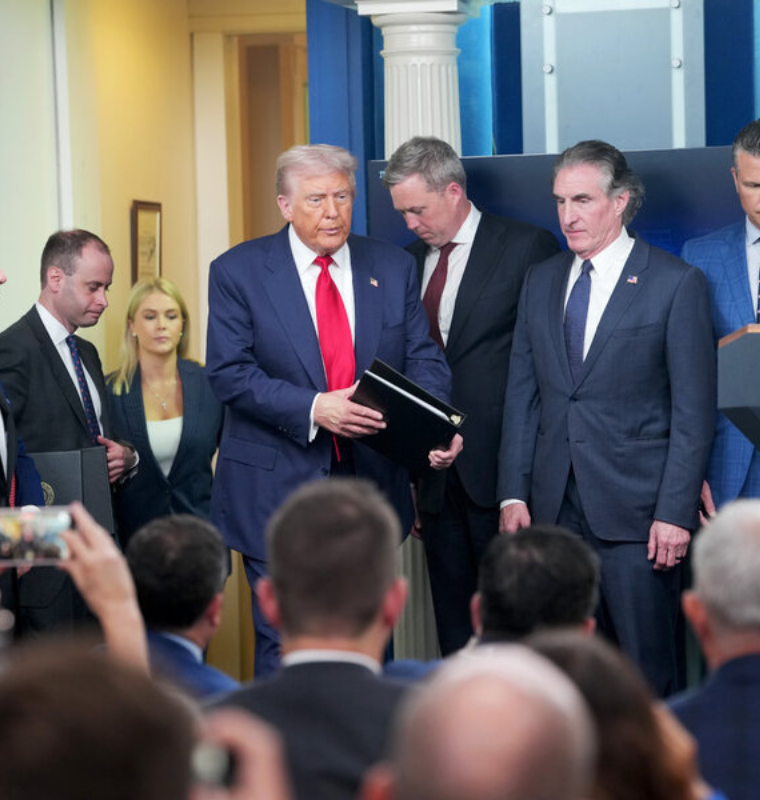U.S. Holds Firm on August 1 Tariff Deadline as EU Races to Avoid Economic Fallout
U.S. Holds Firm on August 1 Tariff Deadline as EU Races to Avoid Economic Fallout
By
Junia Wells
Last updated:
July 22, 2025
First Published:
August 6, 2025

Photo: WSYR
U.S.-EU Trade Talks Hit Critical Stage Ahead of Tariff Deadline
The United States has drawn a hard line ahead of its August 1 tariff deadline, warning that unless an agreement is reached, a baseline 30% duty on European imports will go into effect. The European Union is scrambling to strike a deal, fearing what many economists describe as potentially catastrophic consequences for the continent’s exports.
U.S. Commerce Secretary Howard Lutnick reiterated over the weekend that the deadline is non-negotiable. “That’s a hard deadline,” he told CBS News. “So on August 1, the new tariff rates will come in.” While Lutnick expressed optimism that the U.S. and EU could eventually reach a deal, he made it clear that tariffs would be enforced regardless: “Nothing stops countries from talking to us after August 1, but they’re going to start paying the tariffs.”
EU's Urgent Push for a Trade Pact
The European Union, which exported over €1.68 trillion ($1.96 trillion) in goods and services to the U.S. in 2024, is desperate to secure a trade agreement before tariffs hit. The bloc is hoping to negotiate a deal similar to the one the U.K. struck earlier this year, which includes a 10% baseline tariff with targeted exemptions on cars, steel, and aerospace products.
However, replicating the U.K. agreement may prove difficult. Unlike London, Brussels has a strained relationship with U.S. President Donald Trump, who has consistently criticized the EU for what he views as unfair trade practices. Trump is reportedly pushing for a minimum tariff between 15% and 20%, and in some sectors, such as automotive exports, he is content with maintaining a 25% duty—a move that would hit Germany’s car industry especially hard.
Industry Leaders Warn of Economic Consequences
Experts are sounding the alarm on what the higher tariffs could mean for European exporters. Arnaud Girod, chief economist at Kepler Cheuvreux, warned on CNBC that a 15% to 20% tariff would be “a total car crash for European exports.”
Girod also noted that the recent strengthening of the euro would further hurt EU competitiveness. “It would start to be very painful for European exporters and could potentially reignite fears of inflation in the U.S.,” he added.
European Retaliation Measures Ready to Go
The EU has not remained passive. Officials in Brussels have prepared a two-pronged retaliatory strategy. The first phase includes levies on €21 billion worth of U.S. imports, scheduled for activation as soon as August 6. The second wave—targeting an additional €72 billion in goods—includes items such as apparel, agricultural products, processed foods, and beverages.
A senior EU official told CNBC that all member states except Hungary—whose Prime Minister Viktor Orbán is aligned with Trump—are now united behind the need for a firm response.
In addition, the EU is considering deploying its anti-coercion instrument, a newly adopted trade mechanism designed to push back against economic pressure. If triggered, this tool would give the European Commission sweeping authority to respond to what it perceives as unfair trade actions by third countries—including the U.S.
Market and Diplomatic Implications
Trump’s tariff policy has already altered trade dynamics across multiple continents. The EU’s trade surplus with the U.S. stood at around €50 billion last year, making it a clear target for Trump’s "America First" agenda.
As Europe’s largest trading partner, the U.S. remains vital to EU economic stability, particularly for industrial powerhouses like Germany, France, and Italy. Yet, failure to negotiate more favorable terms than the U.K. could also damage the EU’s credibility and unity.
Arnaud Girod summed it up bluntly: “Not getting a better deal than the U.K. is an issue for the EU. They have to prove that the entire structure of the EU is actually beneficial in a high-stakes negotiation like this.”
Final Thoughts: Countdown to Confrontation
As the August 1 deadline nears, both Washington and Brussels face a pivotal test of political resolve and economic strategy. With nearly $2 trillion in trade on the line, the outcome will not only determine tariff rates—but could also reshape the balance of transatlantic trade relations for years to come.
Whether this ends in a breakthrough deal or a tariff war, the world is watching—and the clock is ticking.
Popular articles
Subscribe to unlock premium content
Disney’s Timeless Magic and How the Entertainment Giant Continues to Shape Culture and Innovation

Imran Khan’s Economic Missteps Amid Political Chaos in Pakistan

The Philippines’ Digital Shift How Remittances and BPO Are Fueling Growth

Disney’s Timeless Magic and How the Entertainment Giant Continues to Shape Culture and Innovation

Imran Khan’s Economic Missteps Amid Political Chaos in Pakistan

Disney’s Timeless Magic and How the Entertainment Giant Continues to Shape Culture and Innovation









